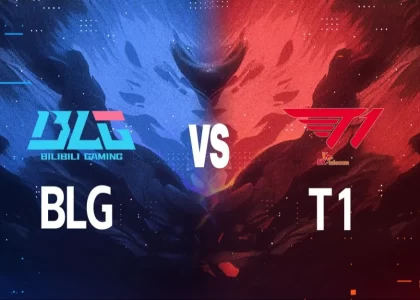Skin betting refers to a form of gambling where participants use virtual items—known as skins—as currency to place wagers, rather than traditional money. These skins are cosmetic items in video games, often altering the appearance of in-game characters, weapons, or other elements without affecting gameplay. Skin betting has been prevalent in the world of esports, particularly in games like Counter-Strike: Global Offensive (CS), Dota 2, and to a lesser extent, League of Legends (LoL).
While skins have no direct gameplay value, they can hold significant real-world monetary value, often traded on secondary markets. This value has made them a popular medium for betting, trading, and even illicit gambling, leading to both widespread popularity and major controversies. Let’s dive deeper into skin betting, its mechanics, legal implications, and the reasons why it’s been both appealing and problematic in the esports scene.
1. What is Skin Betting?
Skin betting allows players and bettors to gamble on the outcome of esports matches or other events using virtual cosmetic items, or “skins,” rather than traditional currency like cash or cryptocurrency. These skins can be acquired through gameplay, purchased from online marketplaces, or traded with other players.
While skins are often used as a way to personalize or enhance the visual aesthetics of a player’s in-game experience, in the context of betting, they become a form of virtual currency. Skins can range in rarity, with some being worth only a few cents, while others can fetch thousands of dollars depending on their rarity and demand.
The gambling aspect comes in when players use their skins to bet on matches, games of chance, or lottery-style raffles hosted on third-party websites. If the player wins, they often receive higher-value skins or a larger collection of them. If they lose, the skins they wagered are lost to the betting site or to the winner.
2. How Does Skin Betting Work?
The core concept of skin betting is similar to traditional gambling but revolves around virtual items instead of money. The process typically follows these steps:
a. Acquiring Skins
- Gameplay Drops: Players can receive skins as in-game rewards, often randomized through loot boxes or event-specific drops.
- Market Purchase: Skins can be bought and sold on platforms like the Steam Marketplace or other third-party sites where players trade with each other, often at varying prices based on demand and rarity.
- Trading: Players often trade skins with others, either directly or through third-party platforms, to acquire specific items they want or to increase their collection’s value.
b. Betting Skins
Once players have skins in their inventory, they can transfer them to third-party betting websites, where they can wager these skins on esports matches or other games of chance. Common skin betting formats include:
- Match Betting: Players wager their skins on the outcome of professional esports matches. This is particularly common in games like CS or Dota 2, where skin trading and betting are prevalent.
- Raffles and Lotteries: Some websites offer lottery-style systems where players can “buy” tickets with their skins for a chance to win higher-value skins or rare items.
- Roulette/Jackpot: In these modes, users bet skins into a communal pot, and a winner is chosen at random. The more valuable the skins a player contributes, the higher their chances of winning the pot.
- Coin Flips and Mini-Games: These involve simple games of chance, such as coin flips or slot machine-style games, where players gamble their skins.
c. Skin Trading and Cash-Out
Many players involved in skin betting don’t stop at using their skins just for in-game personalization. Since skins often have a real-world monetary value, players frequently engage in trading their skins for either other skins or actual currency. Third-party platforms allow users to convert skins into cash, albeit often at a reduced price compared to their market value.
This cash-out aspect has driven much of the allure of skin betting, as players and bettors see the potential to turn their virtual items into tangible monetary gains.
3. The Appeal of Skin Betting
Skin betting’s popularity stems from several key factors:
a. Accessibility and Fun
Skins are often obtained through in-game means, making skin betting feel more accessible and less intimidating than traditional betting for many players. Rather than wagering hard-earned cash, players bet virtual items they may have won or collected, reducing the perceived risk involved.
- Low Barrier to Entry: With skins ranging in value from a few cents to thousands of dollars, even casual players can engage in skin betting without significant upfront investments.
b. The Thrill of Ownership
Skins, especially rare or high-value ones, carry a sense of prestige in gaming communities. Players take pride in owning rare items and often use them as status symbols. Betting on skins adds an extra layer of excitement and thrill, as players wager their prized possessions for a chance to win even more valuable items.
c. Real-World Monetary Value
The ability to cash out skins for real money, particularly through third-party websites, increases their appeal. Many players see skin betting as a way to make a profit, with the possibility of turning virtual assets into tangible wealth. This speculative aspect is akin to financial markets, where players might “invest” in certain skins, hoping their value will increase.
4. Controversies and Legal Issues
While skin betting has been immensely popular, it has also been a source of significant controversy, particularly regarding its legality and ethical concerns.
a. Underage Gambling
One of the most contentious issues surrounding skin betting is the fact that many participants are minors. Since skins are part of video games, and these games are often played by younger audiences, skin betting websites have attracted a significant number of underage users. This has led to accusations that skin betting facilitates underage gambling, as many platforms lack stringent age verification processes.
b. Lack of Regulation
Unlike traditional gambling, skin betting operates in a legal gray area. Many skin betting sites operate outside of strict regulations imposed on traditional betting platforms. This lack of oversight has led to numerous issues, including scams, rigged systems, and the exploitation of players. Additionally, the unregulated nature of skin betting makes it easier for individuals to gamble irresponsibly.
- Shady Operators: Some skin betting sites have been accused of unfair practices, rigging games, or running off with players’ skins. Without regulation, there’s little recourse for players who are defrauded by such sites.
c. Valve’s Involvement and Legal Crackdowns
In 2016, Valve Corporation, the developer of CS, came under fire for facilitating skin betting through its Steam platform, as skins were traded through Steam accounts and third-party websites via Steam’s open API. Valve faced legal pressure from multiple lawsuits accusing the company of enabling illegal gambling. As a result, Valve issued cease-and-desist letters to many skin betting sites, and some were shut down.
However, even after Valve’s intervention, skin betting has continued to persist through various loopholes and unregulated platforms.
d. Psychological Impact
As with other forms of gambling, skin betting can lead to addictive behaviors. The excitement of betting skins, combined with the speculative value of certain items, creates a cycle of risk and reward that can become addictive. Players may find themselves continually betting skins in the hopes of winning larger sums, only to lose and engage in further gambling to recoup losses.
5. The Future of Skin Betting
Despite the controversies, skin betting remains a prevalent form of gambling in the esports ecosystem. However, as governments and regulatory bodies begin to crack down on unregulated betting activities, the future of skin betting may shift toward more legitimate, regulated markets.
a. Regulation and Legalization
One possible future for skin betting is increased regulation. By bringing skin betting under the same legal framework as traditional gambling, governments can enforce age restrictions, ensure fair play, and provide protections for players. Regulated skin betting platforms could offer a safer and more transparent environment for those who wish to engage in this form of gambling.
b. Integration with Cryptocurrency
Another trend that might influence skin betting is the integration of cryptocurrency. Some skin betting platforms have already begun allowing users to convert skins into cryptocurrencies like Bitcoin, offering more anonymity and flexibility in cashing out winnings.
c. Continued Popularity in Specific Games
While CS and Dota 2 remain the frontrunners in skin betting, other games may begin to embrace similar models. The key will be how developers manage the in-game economy and whether they choose to regulate the trading and betting of virtual items within their games.
6. Conclusion: Weighing the Pros and Cons of Skin Betting
Skin betting is a fascinating intersection of virtual economies, gambling, and esports, offering unique opportunities for players to engage in high-stakes wagers using digital items. However, the lack of regulation, the prevalence of underage gambling, and the risks associated with unregulated platforms make it a double-edged sword. For those interested in skin betting, understanding the inherent risks, as well as practicing responsible gambling habits, is crucial.
As esports continues to grow, the future of skin betting will likely evolve alongside the industry’s expansion, with increased regulation and innovation shaping its trajectory. While its controversial past has led to many legal challenges, the lure of turning virtual skins into real-world profits will likely keep this unique form of gambling alive for years to come.

























